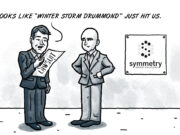
The contemporary school-reform movement was based on the theory that, as long as educators were held accountable for school improvement that raised test scores, the answer to poverty could be found within the four walls of classrooms. This supposedly required teachers to cede their professional autonomy to administrators, as the school boards, education schools and teachers’ unions were “blown up” by “disruptive innovation” so that “transformative” change would be unleashed.
Meanwhile, there was a large body of social and cognitive science that explained why this test-driven, competition-driven experiment couldn’t work, but Silicon Valley venture philanthropists insisted that the creation of incentives and disincentives would attract non-educators who would reinvent schools. Big Data would supposedly drive a technocratic process to “build a better teacher.” Teachers’ compliance would be mandated. Mass school closures would undermine union power and allow the “exiting” of thousands of teachers who weren’t fully on board or “on the same page” with data-driven, teach-to-the-test instruction.
This social engineering degenerated to the point where young teachers were taught to avoid the word “please.” They had to shut down class discussions to keep up with the mandated pacing schedule for covering testable standards.
Charter schools, run by national charter-management organizations (CMOs), would be the cadres that scaled up the “turnarounds,” “transformations” and closures of schools that failed to meet test-score growth targets. Federal Race to the Top and school-improvement grant rules encouraged school systems to drive Baby Boomers from the profession for their supposedly clinging to progressive pedagogies that undermine school improvement. Districts could then rid themselves of the veteran teachers’ higher salaries and benefits and prevent experienced teachers from infecting 23-year-olds with skepticism about bubble-in accountability.
Two experiments reach unfortunate conclusion
Oklahoma City was the site of one of the weirder experiments in using rewards and punishment to increase student performance. Readers may remember MacArthur Foundation “genius” Roland Fryer and his headline-grabbing experiments in using cell phone minutes and uplifting text messages to try and transform OKC’s middle schools. Even though Fryer’s incentives and disincentives had failed in New York City, it was proclaimed as a “cutting-edge kind of activity” that “could have a game-changing effect on our students.” If successful, it could be scaled up across the nation.
When the results of the 2013 Oklahoma City pilot were finally revealed, however, Fryer quietly admitted “there were no tangible benefits,” but reframed the study as a contribution to understanding “the shape of the production technology around the pre-treatment equilibrium.” He blamed the students who “do not know the education production function and thus are not sophisticated enough to translate effort into measurable output.” Fryer concluded, “Students in Oklahoma Public Schools do not have accurate knowledge of the returns to schooling.”
Meanwhile, James Heckman, the Nobel Prize laureate who attended the old Harding High School, documented a fundamental flaw of data-driven school reform. Heckman showed how and why the achievement tests that drove instruction were not predictive of what it takes to succeed in life. He documented the all-important role of the socio-emotional. Then, the New York Times’s Paul Tough researched the science and translated to policymakers the reasons why reformers’ single-minded focus on testable academic standards was doomed to fail.
Unfortunately, both used the term “grit” to describe the non-cognitive characteristics crucial to education success. This macho-sounding term helped open up the door to seemingly tough-minded efforts to use extrinsic motivations to teach character to poor children of color.
Bastardized results
At first, it looked like KIPP was poised to benefit from the new research. During the 1990s, KIPP had used singing, chants and teamwork to move instruction beyond a narrow portion of the intellect. During the early years of the Obama administration, however, the federal government essentially coerced almost all states into adopting the entire corporate-reform agenda. CMOs like KIPP would be the shock troops of the corporate offensive.
KIPP was granted hundreds of millions of dollars in an effort to defeat traditional public schools and to expand its model. It was hoped that KIPP and other No Excuses charters could even take over neighborhood schools without pushing out unconscionable numbers of high-challenge students. KIPP embraced the gravy train and was rated as a “buy” in the 2012 venture philanthropists’ newsletter, Nonprofit Investor. Under pressure to yield instant results and needing to find a way to manage at-risk students, KIPP misappropriated scientific findings in ways that brought protests from the scholars whom KIPP claimed to cite.
KIPP and other CMOs sought to measure grit and grade students on character skills. It was the worst thing that could happen in return for the federal and philanthropic money they received. Just as bad, they’ve done something that was once thought to be impossible: They implemented pre-kindergarten programs that drove student performance down! Here is the latest report from the prime beneficiary of federal innovative grants, Tennessee, about schools responding to pressure to meet growth targets by pushing academics on 4-year-olds in a way that killed the love of learning.
An update to the (ignored) science
Paul Tough’s new book, Helping Children Succeed, updates the science that KIPP and so many other reformers ignored. First, it criticizes the local, state and federal “bureaucratic divide” where “early-childhood and school-system administrators do not collaborate or even communicate much.” He wants systems to “consider the developmental journey of children, and particularly children growing up in circumstances of adversity, as a continuum.”
Second, Tough wants us to start early, to emphasize positive interventions to help families get their children off to a good start. Like Oklahoma’s 25 By 25 early education coalition, he endorses programs ranging from attachment and biobehavioral catch-up (ABC) to the home-visiting program known as the nurse-family partnership. Tough endorses expensive and comprehensive programs such as Educare, as well as All Our Kin, which serves 1,500 children for less than $900 per child per year.
Tough asserts:
… in these schools, where students are most in need of help internalizing extrinsic motivations, classroom environments often push them in the opposite direction: toward more external control, fewer feelings of competence, and less positive connection with teachers.”
Finally, Tough presents new cognitive research that explains why shortcuts are impossible for turning around high-poverty schools — poor children of color need the same respectful, engaging, holistic instruction that affluent students want. Tough, like the advocates for the OKCPS’ Learner First, recognizes that children won’t learn in a meaningful manner unless we respect their autonomy. He shows why we can’t produce education winners by creating losers.
As we should have always known, school improvement requires win-win policies.





















